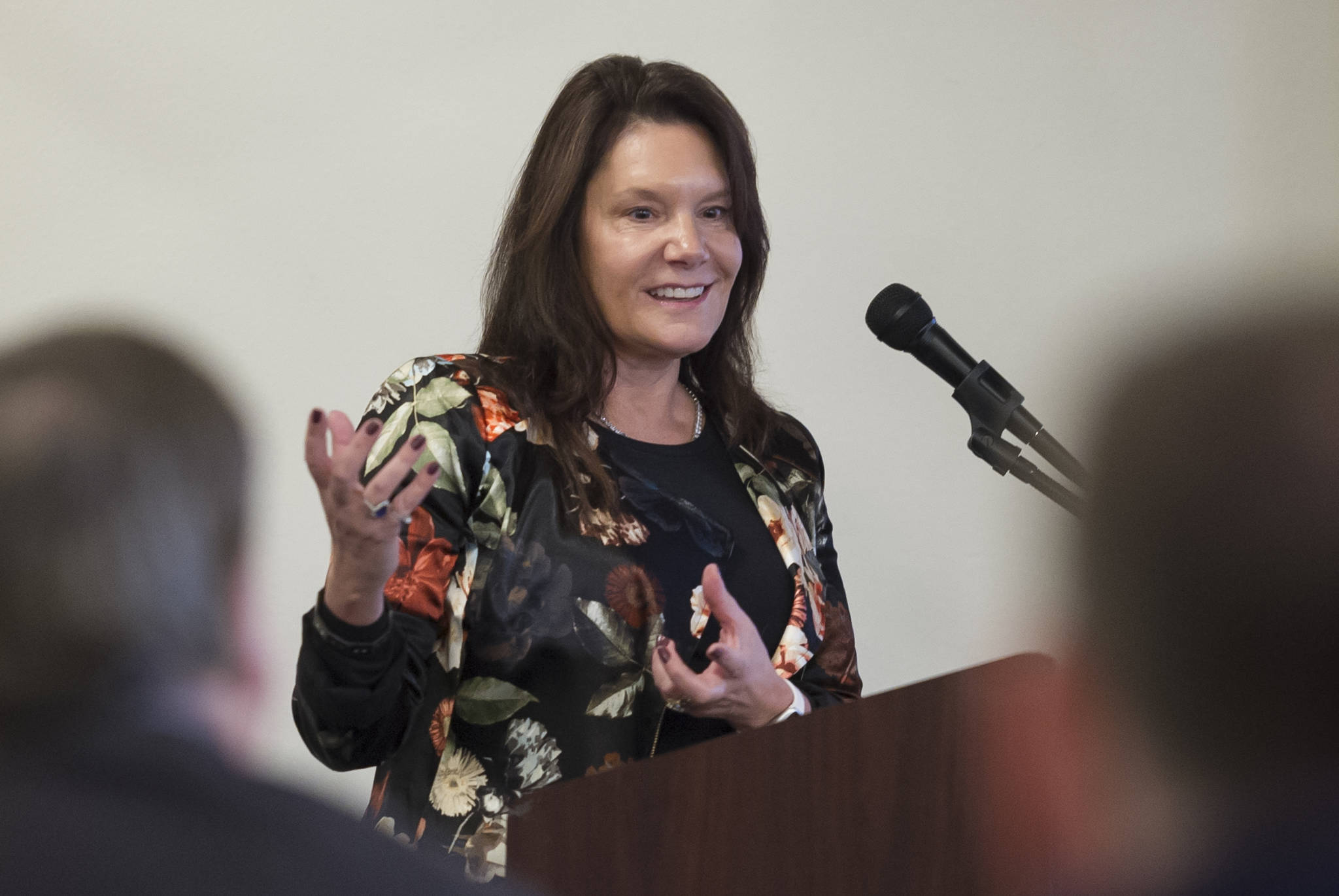Getting a reliable internet connection in parts of Alaska is nearly impossible.
Mary Ann Pease, senior advisor at satellite communications company Pacific Dataport Inc. (PDI), said she’s dealt with various clients over the years who are surprised at how spotty reception can be outside of cities in Alaska.
“It’s just a part of living here in Alaska,” Pease said. “We demand the same technology that you get when you’re in San Francisco or Seattle or anyplace else, but the reality is we’re still a little bit behind.”
PDI, a company started by Microcom Communications Solutions, is trying to change that. The company is preparing a satellite called Aurora IV that will be launched in 2020 solely for supplying broadband internet to all of Alaska.
Pease, who spoke at the Juneau Chamber of Commerce luncheon Thursday, dotted her speech with grand statements and showed a diagram of a satellite positioned over Alaska and shining a spotlight on the entirety of Alaska.
“Mobile communications has to be made available everywhere,” Pease said. “Can you imagine a day when we have no roaming? No dead zones? Literally going beyond borders, that is the vision of satellites to come, with no distinction between rural and urban settings.”
The project, which has been in the works for several years, aims to provide faster internet to Alaskans at a low cost, Pease said. She explained that the satellites that coordinate Alaska’s internet are mostly focused on the Lower 48 and so don’t provide consistent coverage to rural parts of Alaska.
According to BroadbandNow, Alaska is the 44th-most connected state with almost 40 percent of the population having subpar internet connection. Pease cited a study that said 67 percent of the state of Alaska (by area) doesn’t have access to broadband internet, which the Federal Communications Commission defines as internet with 25 of more megabits per second.
For small, isolated communities, this makes for a variety of problems. After the meeting, Pease told an anecdote about internet failing at a hospital in Kotzebue and a patient having to be flown to another location. During her presentation, she mentioned planes flying in remote locations as needing better internet access as well.
A lesser problem is when tourists come to places such as Nome and can’t get internet access, Pease said. She also mentioned that with this satellite, waters in Southeast would be covered so internet would be available on the ferries.
Pease said the satellite will be launched in 2020 and PDI will start serving customers within months of the launch. Customers will need to install a small satellite dish, she said, and the goal is for internet bills to be kept under $100 per month for broadband service (25 megabits per second).
Providing internet to remote Alaska cities, Pease said, can help bring those cities to the rest of the world. As one example, she mentioned that with all the skilled artists throughout the state, it will be easier for them to share their work.
“Right now, rural Alaska, rural America, rural parts of our world, everyone needs to be interconnected in this global economy,” Pease said.
• Contact reporter Alex McCarthy at 523-2271 or alex.mccarthy@juneauempire.com. Follow him on Twitter at @akmccarthy.

